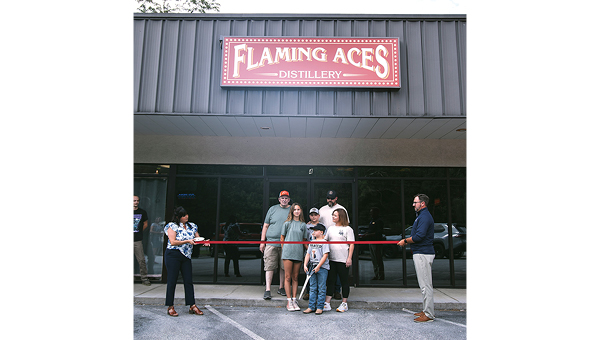Stay safe this winter while shoveling snow and driving on icy roads
Published 11:25 am Tuesday, January 7, 2025
|
Getting your Trinity Audio player ready...
|
Thus far, we have escaped the brunt of the winter storms especially if you live in low-lying regions such as Elizabethton. However, it is a different story if you live in the higher elevations in places like Roan Mountain, Elk Mills, Poga, and even Upper Stoney Creek.
According to the National Weather Service, a much more active weather pattern will return to our area this weekend, and with it snow and ice.
Snow and ice can be dangerous. They can block roads and cause power outages.
Trending
Remember to always listen to weather reports and pay attention to weather warnings.
There are two activities during which people need to use caution when winter snow hits – driving a car on snow and ice, and shoveling snow.
The American Heart Association warns that the combination of exertion required to shovel snow, combined with cold temperatures, can increase risk of heart attack or cardiac arrest. In regions where snowfall doesn’t happen frequently, people’s bodies may not be used to the physical demands of shoveling.
Older adults, people who don’t exercise regularly, and people with certain health conditions – heart disease or history of heart attack or stroke, diabetes, high cholesterol, high blood pressure, or a history of smoking – should get someone else to take care of snow removal. Everyone else can reduce the risk of injury by:
– Dressing warmly, including hat and gloves, and something to cover your mouth and nose. Change out of wet clothing.
– Pushing or sweeping snow instead of lifting it.
Trending
– Using a snowblower instead of shoveling.
– Taking frequent breaks to rest and warm up.
Winter weather can make driving particularly dangerous, due to reduced visibility, and slippery or snowy roads. When snow collects on vehicles, it not only blocks the driver’s view of the road, but if it comes loose while in motion, it can create hazards for other drivers.
When driving, ice can be very difficult to recognize. The roadway may appear to be wet when in reality what appears to be water may actually be ice. If the temperature outside is below freezing, ice can form on the roads, especially on bridges and overpasses. When encountering ice, do not panic and do not stomp on your brakes. It is safer to slowly decelerate to a stop.
“You are your car’s best safety feature,” says the National Safety Council, which emphasizes the importance of preparing your car for winter, knowing its limits (and yours), and practicing safe driving habits. Make sure to:
– Always wear your seatbelt.
– Clean snow and ice off your car completely – including the top of the vehicle – and be sure all windows, mirrors, and lights are clear.
– Winterize your car by checking battery performance, fluid levels, tire tread, and wiper blades.
– Keep a complete emergency kit in your car and easily accessible.
In very cold weather, it can also be helpful to warm up your vehicle before driving, but never do so in an enclosed space, which can cause carbon monoxide to build up. “If you’re going to heat up your car, do it outside and not in a garage,” advises the National Safety Council.
Be weather wise, know the weather forecast during your travel. Learn the weather/climate risks for the area you are traveling to and know what to do before, during and after such events.
Stay off the road during and after a winter storm.
During the winter keep the proper emergency winter road tools in the truck of your automobile.
Be extra vigilant for pedestrians. The most important aspect of wintertime [driving] risk is reduced hours of daylight and the heightened risk for pedestrians in hours of darkness.
In addition to shorter days, snowstorms can make areas intended for pedestrians – sidewalks and bus stops – impassable, leading people to walk in roadways.
Remember, that the main impact of winter weather is to travel. If you don’t have to travel, stay at home and off roadways.





